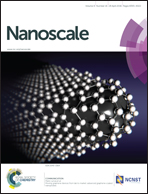Polysilicon-chromium-gold intracellular chips for multi-functional biomedical applications
Abstract
The development of micro- and nanosystems for their use in biomedicine is a continuously growing field. One of the major goals of such platforms is to combine multiple functions in a single entity. However, achieving the design of an efficient and safe micro- or nanoplatform has shown to be strongly influenced by its interaction with the biological systems, where particle features or cell types play a critical role. In this work, the feasibility of using multi-material pSi-Cr-Au intracellular chips (MMICCs) for multifunctional applications by characterizing their interactions with two different cell lines, one tumorigenic and one non-tumorigenic, in terms of biocompatibility, internalization and intracellular fate, has been explored. Moreover, the impact of MMICCs on the induction of an inflammatory response has been assessed by evaluating TNFα, IL1b, IL6, and IL10 human inflammatory cytokines secretion by macrophages. Results show that MMICCs are biocompatible and their internalization efficiency is strongly dependent on the cell type. Finally as a proof-of-concept, MMICCs have been dually functionalized with transferrin and pHrodo™ Red, SE to target cancer cells and detect intracellular pH, respectively. In conclusion, MMICCs can be used as multi-functional devices due to their high biocompatibility, non-inflammatory properties and the ability of developing multiple functions.


 Please wait while we load your content...
Please wait while we load your content...